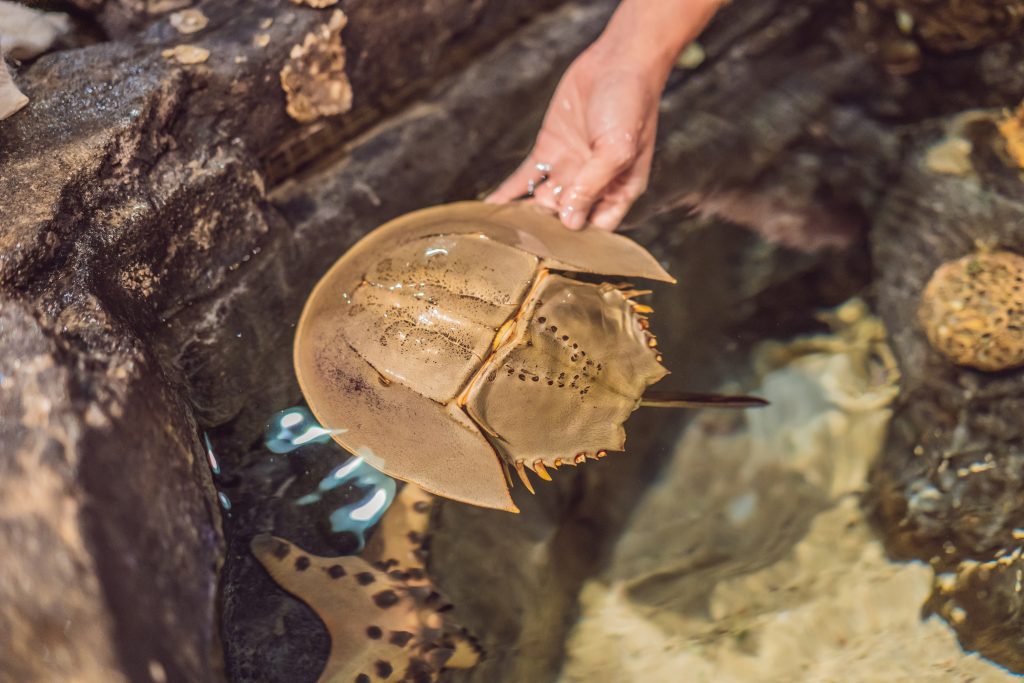Horseshoe Crabs & COVID-19: How They’re Related

Here is how an ancient crab, a doctor, and the COVID-19 virus are connected.
Dr. Meredith Warner here –
Many do not know this, but I am a ‘Fighting Blue Hen,’ a proud graduate of the University of Delaware. Delaware is my home state, although I am an Army brat and have lived all over the place. Regardless, almost every summer of my life I have spent at least a week at the beach in Delaware.
On those beaches are the renowned horseshoe crabs, or Limulus polyphemus. These prehistoric crabs have survived throughout the history of the world and are protected today. The blood of the crab is used in medical research and is currently subject to ongoing research into the vaccine for COVID by way of utilizing this creature’s serum.
The horseshoe crabs provide eggs that are used as energy for annual migrations of birds. They lay about 90,000 eggs as they spawn that are often eaten by certain birds such as red knots and ruddy turnstones. These birds need the energy to fly the 9000 miles or more they travel each year.
As I grew up around horseshoe crabs and am used to them, I do not fear them – and I know how to behave around them. We Delawareans can recognize riff raff from out of state by how they move the crabs that often wash up on the shore at high tide. Those that carefully pick the crab up by the shell and gently place it back into the water are natives. Those that callously and carelessly grab the crab’s tail, which kills the horseshoe crab, and then swings it into the water are from elsewhere. This living fossil has been around for 450 million years and is most at risk from ignorant humans.
Horseshoe Crabs & COVID-19
It is illegal to harvest horseshoe crabs, unless it is to collect blood for purposes of vaccine production. Even then, the crabs are not killed. They simply donate blood! The crabs are collected by boats up and down the East Coast and are moved in refrigerated vans to labs. In the lab, some of the crab’s blood is collected.
Then, the crab is released back into nature within a day and a half. This blood is used for the development and manufacturing of almost all injectable medications and vaccines in our country.
Horseshoe crab blood is very sensitive to a particular toxin produced by bacteria. Bacteria can enter the bloodstream through skin with injections. Using this crab’s blood helps to make injections safe for humans. The blood is used for making a test that reacts to the endotoxins of bacteria. This is the LAL test, or limulus amebocyte lysate.
This assay can detect the levels of bacterial toxins in any given drug. The assay reacts with bacterial endotoxin lipopolysaccharide, a component of the membrane of gram-negative bacteria. One industry executive estimates that only about a week’s worth of production from his facility would be enough to protect 5 billion doses of the upcoming COVID vaccines. Widespread inoculation is expected once these vaccines are approved, and there are 40 in various stages of research right now.
So, the ancient horseshoe crab from my Home State is vital to the production of safe vaccines for the coronavirus of 2019! It’s amazing how many naturally-occurring wellness solutions are available right at our fingertips, just like the horseshoe crab.





